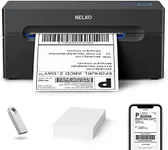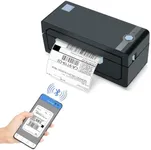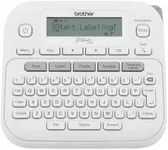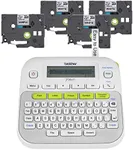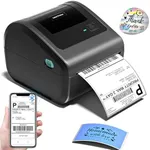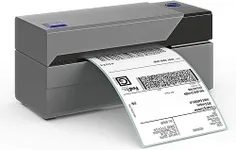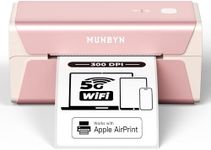Buying Guide for the Best Label Maker Printers
Choosing the right label maker printer can make your labeling tasks much easier and more efficient. Whether you need it for home organization, office use, or industrial purposes, understanding the key specifications will help you select the best model for your needs. Here are the main factors to consider when picking a label maker printer.Print ResolutionPrint resolution refers to the clarity and detail of the printed labels, measured in dots per inch (DPI). Higher DPI means sharper and more detailed labels. For basic home or office use, a resolution of 200-300 DPI is usually sufficient. For professional or industrial use where fine details are important, such as barcodes or small text, look for a printer with 300 DPI or higher. Consider your specific needs: if you require high-quality, detailed labels, opt for a higher DPI.
Print SpeedPrint speed indicates how quickly the label maker can produce labels, usually measured in millimeters per second (mm/s). Faster print speeds are beneficial for high-volume tasks, saving you time. For occasional home use, a lower speed may be acceptable, but for busy office environments or industrial settings, a higher speed (e.g., 30-60 mm/s or more) will be more efficient. Assess how frequently and quickly you need to produce labels to determine the appropriate print speed for your needs.
Label WidthLabel width refers to the maximum width of the labels the printer can handle. Common widths range from 1/4 inch to 4 inches or more. For general home or office use, a standard width of 1/2 inch to 1 inch is often sufficient. For specialized tasks, such as shipping labels or large organizational labels, you may need a printer that supports wider labels. Consider the types of labels you need to print and choose a printer that accommodates those widths.
Connectivity OptionsConnectivity options determine how you can connect the label maker to your devices. Common options include USB, Bluetooth, and Wi-Fi. USB connections are reliable for direct connections to a computer. Bluetooth and Wi-Fi offer wireless convenience, allowing you to print from smartphones, tablets, or multiple computers. If you need flexibility and ease of use, especially in a shared office environment, look for a printer with wireless connectivity. Choose based on how you plan to use the printer and the devices you will connect to it.
Software CompatibilitySoftware compatibility refers to the label design software that works with the printer. Some label makers come with their own software, while others are compatible with third-party applications. Ensure the software is user-friendly and offers the features you need, such as templates, barcode generation, and customization options. If you have specific software preferences or requirements, check compatibility before purchasing. Choose a printer with software that meets your design and functionality needs.
Power SourceThe power source for label makers can vary, including options like batteries, rechargeable batteries, or AC adapters. Battery-operated models offer portability, making them ideal for on-the-go use or in locations without easy access to power outlets. AC-powered models are better for stationary use, providing consistent power without the need to replace or recharge batteries. Consider where and how you will use the label maker to determine the best power source for your situation.
Durability and Build QualityDurability and build quality are important for ensuring the label maker can withstand regular use, especially in demanding environments. Look for models with sturdy construction and high-quality materials. For industrial or heavy-duty use, choose a label maker designed to handle rough conditions and frequent use. For home or light office use, a less rugged model may suffice. Assess the environment and frequency of use to select a label maker with appropriate durability.
